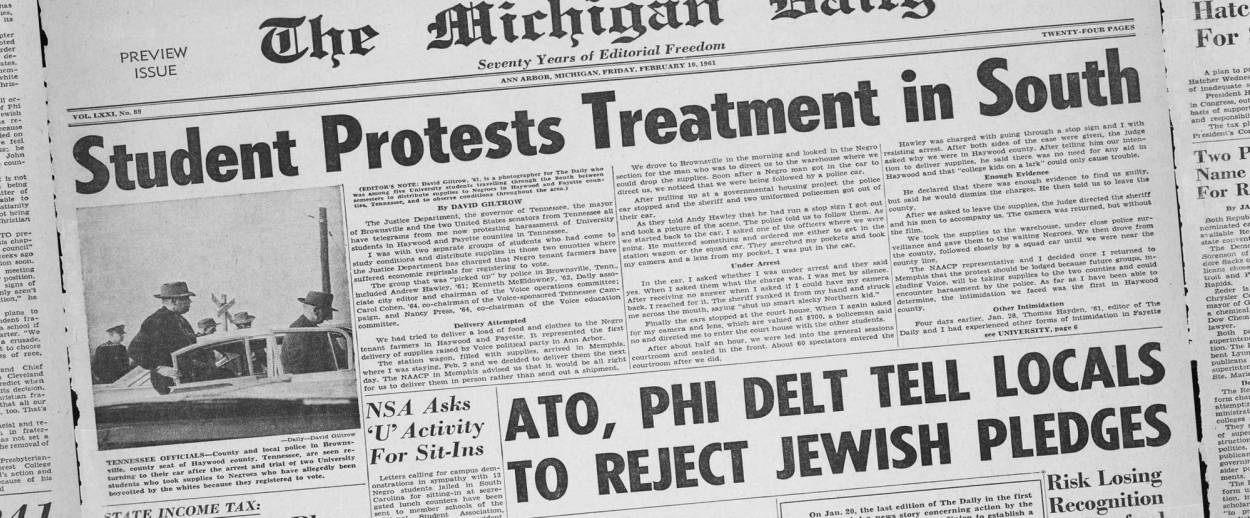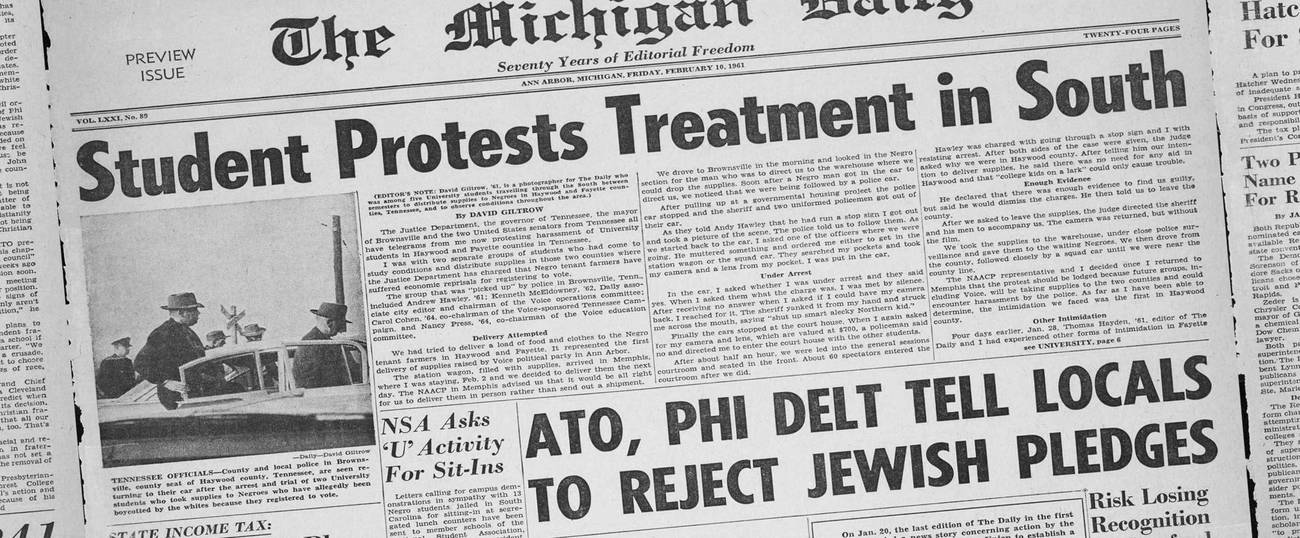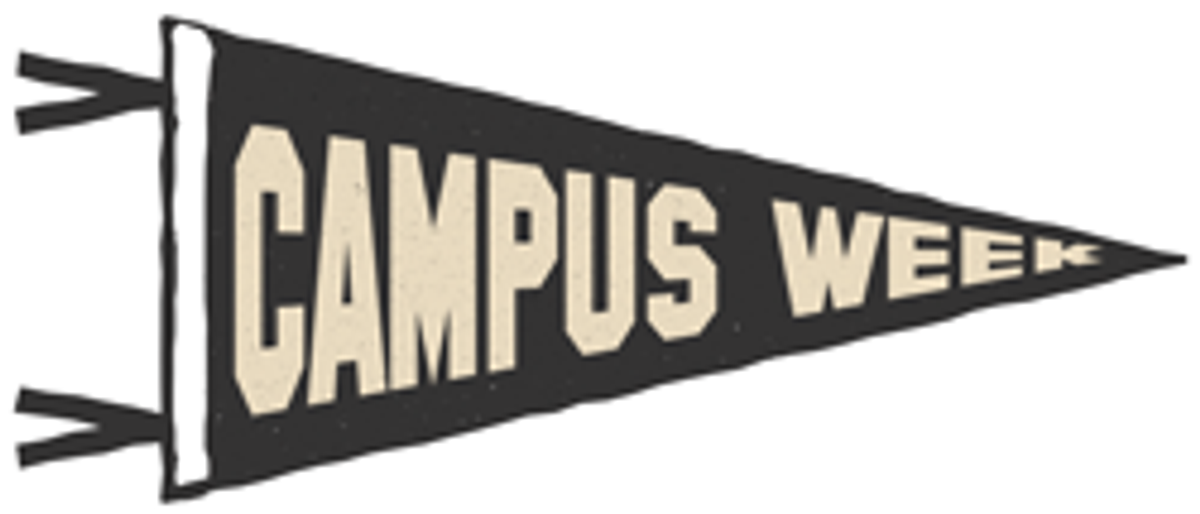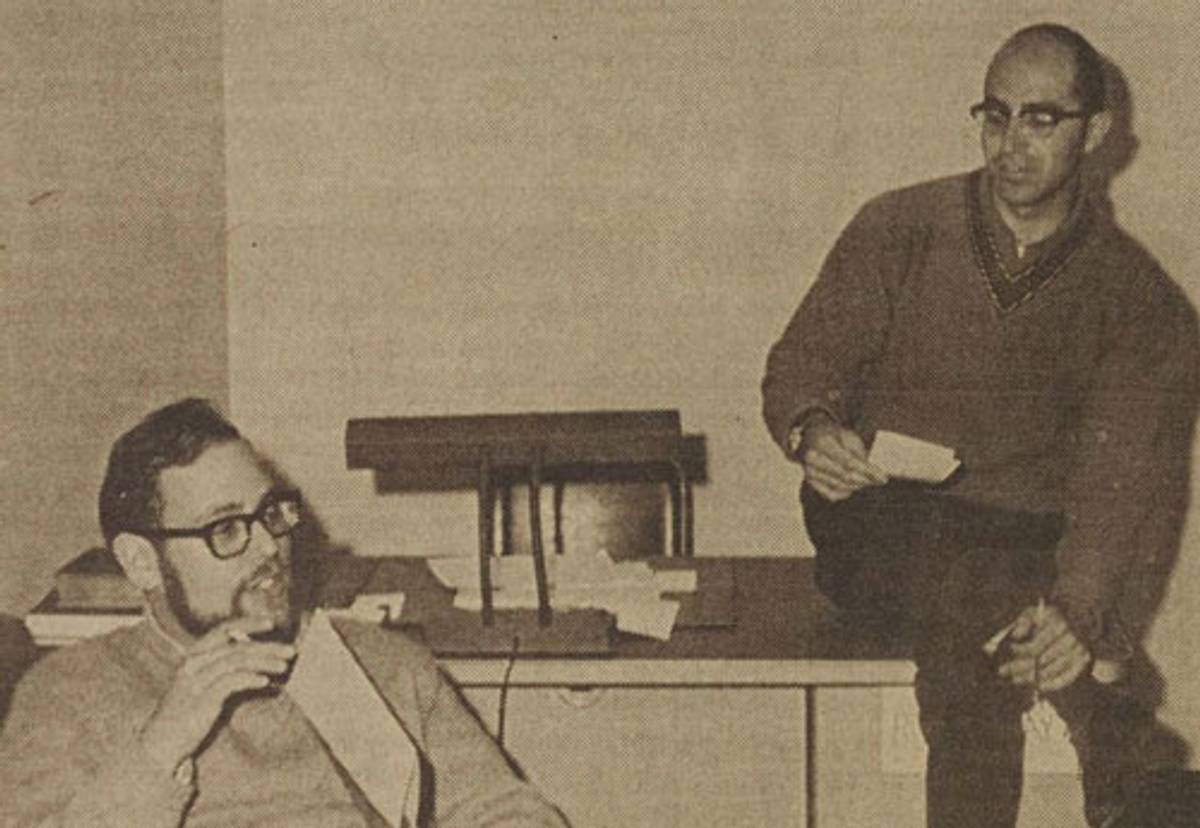Anti-Semitism and the Birth of Jewish Studies
Campus Week: A memoir of discomfort—and progress—as a graduate student at the University of Michigan in the 1960s




The 1960s were an exciting time to be a college student in America. But not for academic reasons. This was especially true at the University of Michigan, where I was a graduate student in 1962 and from 1964 to 1970. The Civil Rights and anti-Vietnam War movements disrupted the “business as usual” atmosphere on campuses across the United States, none more so than at Michigan. Yet, as I look back at these tumultuous times, what I most remember are the wonderful friends I made, the tension and pressure I felt as I slogged along trying to finish my doctorate, and my frustration with the ambivalent attitudes toward Jewish identity and Jewish activism displayed by my Jewish peers and Jewish faculty members. Most especially, the opposition toward me and a few like-minded Jewish friends as we pushed for a Jewish studies program at the university.

The first time I encountered a reaction to my being Jewish was in a history master’s degree seminar in 1962. When the professor asked each of us what we planned on researching and writing about, my answer was “a history of the Jews in Detroit” (which later became the subject of my doctorate). The professor then asked me if I knew Yiddish. When I replied “yes,” I remember the look on the faces of the non-Jews in the class. It varied from surprise to open-mouthed astonishment. After all Rockaway is not exactly a well-known Jewish family name, and I didn’t look like the stereotypical image of the Jew. I didn’t sport side locks, or have a particularly long nose. The look on the faces of the few Jews in the class was something else. They all blushed. I wondered why they reacted in this way.
That same semester I was invited to the home of a popular and distinguished American history professor, Sidney Fine, who later became a mentor and dear friend. All of his graduate students attended. No one wanted to chance not making an appearance. We mingled and talked in his living and dining rooms. Then we went down to the basement recreation room where refreshments were served. They consisted of bread, bagels, cakes, salami, cheeses, coffee, and tea. He came over to me and encouraged me to taste the salami which he called “the real McCoy.” I took that to mean “kosher.” I knew he was very Jewish and had a strong Jewish education and upbringing. I wondered why he just did not use the word kosher. But I quickly understood that most of the students there were not Jewish, and he likely did not want to make his own Jewish sensibilities too obvious. But why the uneasiness in doing so?
Most of my undergraduate and graduate-school professors had grown up in the 1930s and served in the armed forces during World War II. Many of them went to graduate school on the GI Bill, which paid for their tuition and books and provided a stipend for families. I didn’t know where they served or what they experienced in the war, but I assumed that they became aware of the Holocaust. I also assumed that this knowledge must have had an impact on them.
The attitude of my Jewish peers especially surprised me. We all came from similar backgrounds: third-generation Jewish-Americans whose grandparents had immigrated to the United States from Eastern Europe before WWI. That’s where the similarities ended. My widowed mother and I lived with her parents and they raised me while she went to work. The language we spoke at home was Yiddish. My grandparents were Orthodox, so they enrolled me in a religious day school. I remained there until I was 12 years old, when I attended public school. I am no longer Orthodox, but remain what is called a “traditional” Jew. That is, I don’t live according to Halakha, but still maintain a kosher home and occasionally attend synagogue on Shabbat and on most holidays.
Activist Jewish students learned that a little militancy could pay off
The impact of my early Jewish education and the example set by my grandparents has kept me from feeling self-conscious about who I was. I have always felt comfortable in my skin. And even when I played in sports in high school and college I never felt I had to hide who and what I was. If someone had a problem with that, it was their problem, not mine.
My Jewish graduate-student peers felt differently. They referred to themselves simply as “intellectuals,” never as Jewish intellectuals. Most of them never identified themselves as Jewish at all. More than one of them commented to me on how “ethnic” I was. I knew exactly what they meant: You’re so blatantly Jewish. I recognized that this kind of behavior made them feel uncomfortable.
Sometimes my Jewishness could prove awkward. Such a case involved me and a dear fellow grad student, Larry Engelmann. I mistakenly assumed that with a name like Engelmann, Larry must be Jewish. I didn’t realize that a family name ending with two n’s indicated a German spelling. So throughout our graduate years, I peppered my conversations with Larry with Yiddish words and expressions. I once even asked him if his parents were upset when he married a shiksa. He said no. In 1970, we held a going-away party for those of us who had completed our doctorates and were going off to our first academic positions at universities around the United States. At the party, one of my friends came over to tell me that for six years I kept speaking to Larry in Yiddish, and he wasn’t Jewish. Ohmigosh, I said.
I went over to Larry and apologized. “Why didn’t you tell me you weren’t Jewish,” I said. He replied, “Aw, I didn’t want to make you feel bad.” I thought, now there’s a real friend. We remained close friends for over 40 years, but in all that time, I never again spoke Yiddish to him.

What especially galled me was the stance taken by Jewish professors on campus. I was once on a panel discussing Philip Roth’s Portnoy’s Complaint. I took the side defending the book against charges that Roth was a self-hating Jew and the book was anti-Semitic. The other side, made up of Jewish faculty members, voiced the opposite opinion. One of the members, a professor of linguistics, said it was books like this that the Nazis used in their campaign against the Jews. Roth’s book aided and abetted American anti-Semites, he said, and would give rise to more anti-Semitism. “Boy, are you insecure,” I said. He responded, “I have a right to be.” Later, one of my professors told me how shocked he was to hear gentile colleagues he had known for years express what the British liked to call “genteel” anti-Semitism. This knowledge helped me understand why my opponent on the panel may have reacted the way he did to Portnoy’s Complaint.
Most exasperating to me was the response that I and a small group of like-minded friends received when we pushed for a Jewish studies program at Michigan. For over three months, we met with Jewish professors in the history, political science, philosophy, and Near Eastern studies departments. The result was that only one professor, Zvi Gitelman, a recently arrived young professor of political science, openly supported our efforts. At one of our final meetings, after listening to the excuses the professors put forth as to why Jewish studies was not a credible academic field, I burst forth: “You identify as Jews when you give lectures or talks to Hadassah ladies or Jewish organizations for money. But your Jewish sensitivities vanish when we ask you to support Jewish studies at the university.”
We launched our campaign for Jewish studies at the same time the African-American students demanded that the history department hire a black professor to teach African-American history. The department responded that they would be happy to do so, but they could not find a qualified black academic to fill the post. However, the black students reacted to this rejection much differently than we did in our campaign. First, they locked all the office doors in the history department. Then they and their white student allies invaded history lectures and disrupted the classes by shouting and banging on pots and pans. After three or four days of tumult, the history department announced that they had found a “qualified” black instructor. They hired Harold Cruse, who authored the book, The Crises of the Negro Intellectual (1967). What we activist Jewish students learned from this was that a little militancy could pay off.
When we first approached the Detroit Jewish Federation for money to fund a Jewish studies program at Michigan, we got the same answer the professors gave: “It’s not a credible academic field.” But now, rather than meekly go away, we decided to act. We chained ourselves to the doors of the federation building and invited the Jewish and non-Jewish press to the event. The adverse publicity created a stir in the Jewish community and moved the federation to eventually provide seed money to fund a position in Jewish history at Michigan. In 1972, Jehuda Reinharz became the first professor of Jewish history at the University of Michigan. He later became president of Brandeis University.
As I reflect on those years, I now appreciate why all the hesitation to openly express one’s Jewish identity: the concern about anti-Semitism. In the city of Detroit in the 1960s, the Detroit Athletic Club barred Jews from membership. Private golf courses restricted their membership to non-Jews. Certain neighborhoods, such as the affluent suburb of Grosse Pointe, maintained “gentlemen’s agreements,” of not selling homes to Jews. And the Detroit Edison company and other firms did not hire Jews.
I personally experienced the Detroit Edison company’s policy when I was an undergraduate. I had received a Detroit Edison scholarship and was assured that I was the top candidate for their summer internship. That is, until I had to fill out an employee-occupations form “purely as a formality.” One of the questions on the form asked what church I attended. When I wrote “Congregation B’nai David” I can still visualize the reaction of the interviewer. As he read this line, his head abruptly jerked back. Afterward, I did not hear from the Edison company for two weeks. When I called them about it, they told me they were sorry, but another candidate had been chosen. I immediately contacted the local Anti-Defamation League (ADL) office and told them what happened. They informed me that the Detroit Edison company’s no-Jews policy had existed for years. The ADL had been fighting against it for some time, but without success.
During the 1960s my parents’ and teachers’ generation still remembered the virulent anti-Semitism that existed in America during the 1920s and 1930s. This was especially true in Detroit, where, in the early 1920s, Henry Ford conducted an anti-Semitic campaign titled “The International Jew: The World’s Foremost Problem,” in his newspaper, The Dearborn Independent. This campaign led Jews to boycott Ford automobiles till after Henry died. In the 1930s, the Detroit radio priest Father Charles Coughlin, vilified Jews and the “Jewish Bolsheviks” in his newspaper, Social Justice, and on his weekly Sunday night radio broadcasts, which attracted millions of listeners. Father Coughlin blamed Jews for the Bolshevik Revolution, and characterized President Roosevelt’s New Deal as the “Jew Deal.”
But the memories of hard-core anti-Semitism, however scary, did not adequately account for the hesitancy to express any Jewish identity on the part of my Jewish peers and Jewish faculty members at the university. Abandoning or hiding from your heritage in order to be accepted has never worked. It did not work in Europe and it does not work in America.
Attitudes began to change toward the end of the 1960s. Israel’s 1967 victory in the Six-Day War elevated the status of Jewish-Americans and gave them a new sense of pride and Jewish consciousness. Significant numbers of them became more Jewish in their behavior and activities. And gentile attitudes toward Jews underwent a change. This also became evident on Michigan’s campus. I remember being in the gymnasium locker room when I heard a non-Jewish faculty member remark to his Jewish colleague, “You people sure kicked the crap out of them.”
Once upon a time, persecution was the glue that held non-religious Jews together, but it no longer appears to play a significant role in Jewish survival in America. However, surveys and journalistic pieces in the general and Jewish press point to a resurgence of overt anti-Jewish sentiment in the United States, perhaps especially on college campuses and among academics. I can only wonder what impact this new turn of the wheel will have on the future of Jewish-American identity and attitudes, and on American Jewish life.
***
Read more from Campus Week, when Tablet magazine takes stock of the state of American academia and university life.
Robert Rockaway is professor emeritus at Tel Aviv University, and the author of But He Was Good to His Mother: The Lives and Crimes of Jewish Gangsters.